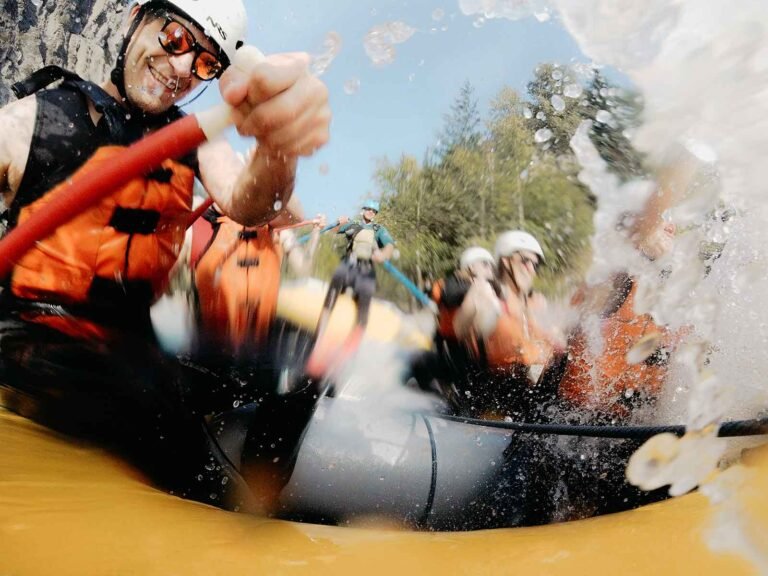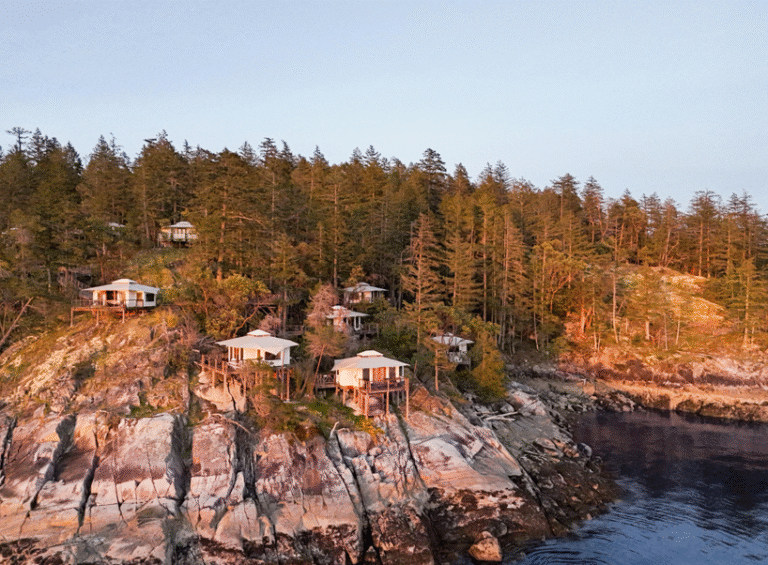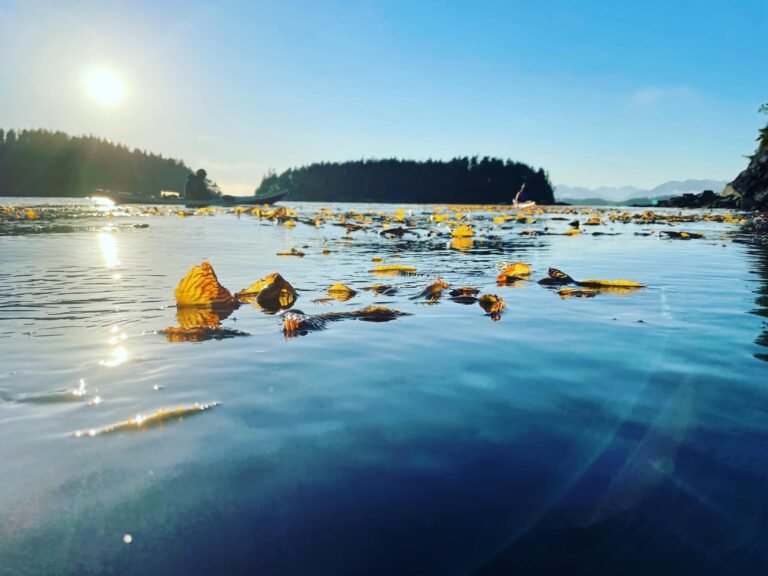Roderick Haig-Brown Provincial Park in the Shuswap, renamed Tsútswecw Provincial Park in 2018, encompasses the entire length of the Adams River (11km between Adams Lake and Shuswap Lake) and protects the spawning beds of the sockeye, chinook, coho and pink salmon. Situated on both sides of the Adams River, the 1,076-hectare park is the site of the largest sockeye salmon run on the West Coast. This is a fascinating place to visit at any time of year, but particularly in early October, during the run of the Adams River sockeye salmon.
Roderick Haig-Brown (1908 – 1976) was a magistrate, writer, angler and conservationist dedicated to preserving, among other wildlife, the sockeye salmon so key to British Columbia’s economy. He even wrote a poem about salmon, which appears in its entirety on a plaque in the park named in his honour.
There is an excellent interpretive area that explains the whole phenomenal trek of the sockeye salmon. A “dominant” run, which witnesses millions of salmon battling upstream to spawn, occurs every four years, followed by years of much smaller runs. Every fourth year is a dominant run, with millions of fish to be seen, when the sockeye will be joined by chinook, coho and pink salmon.
The years 2010 and 2014 will be dominant runs. The Adams River Salmon Society coordinates the celebration known as the ‘Salute to the Sockeye’ during the dominant years. The years 2011 and 2015 are “sub-dominant” runs of sockeye. These years often have substantial returns of sockeye and offer excellent viewing opportunities. During the last three weeks of October in years where there isn’t a ‘dominant’ or ‘sub-dominant’ return, a small number of salmon begin their spawning cycle. The exact dates of the late summer-early fall salmon run depend on temperature, rainfall and water levels. The best place to view spawning salmon will be in the channel next to the parking lot.
The wooded area surrounding the river contains a natural assortment of trees including the Douglas-fir, cottonwood, birch, alder, ponderosa pine, hemlock and cedar. Many wild critters live in this riverside park, among them black bears, beavers, mink, and river otters. During the salmon run, eagles are often seen.
The park has an important heritage, as pictographs on canyons walls indicate the presence of First Nations people long before European settlement. Within the park are several cultural heritage sites, including archaeological sites that have uncovered evidence of large settlements and remnants of kekulis (pit houses).
An historic flume for floating logs to the Adams River from Skmana Lake dates back to the early part of this century. Some of the original timbers that supported the flume are still in place. Adams Lake Lumber employees re-constructed a portion of flume to the original design. It can be viewed above the first bridge in the Huihill trail system.
Tsútswecw Provincial Park contains 26 km of trails that are suitable for hiking and mountain biking in the summer, and for cross-country skiing and snowshoeing in the winter. The park has several beautiful walks and low-key hikes; the Lower Trail System provides acces to viewing the salmon run along the Adams River. You shouldn’t miss the Reinecker Creek self-guided nature walk here, which leads to Margaret Falls. The trails in the lower portion of the park are near the river and subject to flooding each spring. Caution should be taken along the river banks.
There are excellent opportunities to view salmon from the viewing platform and trails on the lower trail system. The Upper Trail System offers a great view of the river canyon and the rafters and kayakers that navigate it.
Angling for rainbow trout, dolly varden, and whitefish is popular in the park, with the canyon and the river mouth being among the most productive sites. Single barbless hook catch and release only. Note: The Adams River is closed to salmon fishing year-round, and in spring is also closed to rainbow trout fishing.
The Adams River squeezes through a narrow canyon portion of the valley to create spectacular rapids that are enthusiastically used by rafters and kayakers. Professionally guided whitewater rafting as well as whitewater canoeing and kayaking take place on the Adams River. Motorized watercraft are not permitted on the river and inner tubes and air mattresses are not recommended for travel on the Adams River as several people have been killed while using these devices.
The park encompasses Huihil Creek, also known as Bear Creek, a small canyon and surrounding forests consisting of second-growth Douglas-fir interspersed with cedar and hemlock. Huihil Creek is a peaceful little patch of wilderness popular for hiking. There is a beautiful waterfall on Bear Creek that is viewable from the Flume Trail System.
There are no camping facilities in the park, and no drinking water is provided on site. Pit toilets are provided.
Tsútswecw Provincial Park is located on both sides of the Adams River, between Adams Lake and Shuswap Lake in the Shuswap region of British Columbia. Access to the park is 5 km on paved roads from the Trans-Canada Highway 1 at Squilax, east of Kamloops.
Nearby Regions & Towns
Park Notices






